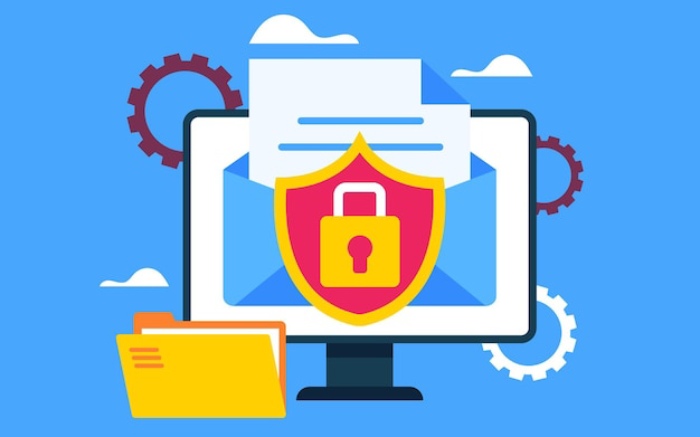SPF Permerror Solution: Prevent Email Deliverability Issues And Security Risks
The Sender Policy Framework (SPF) serves as an essential protocol for email authentication, aimed at mitigating the risks of email spoofing and enhancing deliverability. Nonetheless, incorrect SPF configurations may lead to a permanent error (Permerror), which can hinder the authentication of legitimate emails. Such complications can negatively impact your email marketing efforts, tarnish your sender reputation, and increase vulnerability to security risks. This guide provides a comprehensive overview of SPF Permerror, its underlying causes, and practical strategies for effective resolution, thereby promoting seamless email delivery and bolstering security measures.
What is an SPF Permerror?
A Permerror in SPF arises when an email's SPF verification fails definitively, hindering its ability to authenticate successfully. In contrast to temporary errors, which may self-correct, a Permerror signifies a fundamental issue related to the structure or configuration of the SPF record.

Common Consequences of SPF Permerror:
- Email Deliverability Issues: Legitimate emails may end up in spam folders or get outright rejected.
- Increased Security Risks: Without proper SPF validation, your domain becomes vulnerable to spoofing and phishing attacks.
- Damaged Sender Reputation: Repeated email failures can lower your domain’s reputation with email providers.
Common Causes of SPF Permerror
- Exceeding DNS Lookup Limits: SPF records have a cap of 10 DNS lookups. Surpassing this threshold results in a Permerror.
- Invalid Syntax in SPF Records: Errors in spelling or formatting within the SPF record may cause it to become invalid.
- Missing or Incorrect Mechanisms: Critical SPF mechanisms such as include, ip4, or ip6 might be absent or improperly configured.
- Circular References: Interconnected inclusion mechanisms that reference one another result in recursive lookups, ultimately resulting in a Permanent Error (Permerror).
- Domain Configuration Issues: The domains cited in the SPF record might possess incorrect or obsolete configurations.
Step-by-Step Solutions to Fix SPF Permerror
1. Reduce DNS Lookups
- Audit Your SPF Record: Examine all inclusion mechanisms and eliminate any duplicate or unnecessary entries.
- Flatten the SPF Record: Where feasible, substitute various inclusion entries with designated IP ranges or subnets.
- Leverage Subdomains: Distribute DNS queries by utilizing separate subdomains for email-sending services.
2. Ensure Proper Syntax
Use tools like SPF record checkers to validate your SPF record for syntax errors.
Follow the correct SPF syntax format:
Example:
v=spf1 ip4:192.168.1.1 include:example.com -all
3. Avoid Circular References
- Verify the cited domains to ensure they incorporate solutions for recursion-related problems.
- Eliminate or substitute any entries that may pose issues with designated IP addresses as required.
4. Use SPF Record Optimizers
- Third-Party Tools: Services such as SPF Flattening and optimization can simplify configurations and address lookup challenges effectively.
- Monitor Changes: Consistently assess and modify your SPF record to accommodate any alterations in email-sending platforms.
5. Validate All Domains
- Verify that all domains included in your SPF record are properly set up and consistently managed.
- Eliminate any mentions of domains that are no longer active or have been phased out.
6. Implement Additional Email Authentication Protocols
- DMARC: Implement DMARC to synchronize SPF and DKIM (DomainKeys Identified Mail), thereby enhancing the robustness of email authentication.
- DKIM: Utilize DKIM to sign your emails, providing an additional safeguard against spoofing attempts.

Best Practices for Preventing SPF Permerror
Minimize Complexity
To ensure an efficient SPF record, include only the necessary mechanisms and remove any redundant entries. To comply with the limit of 10 DNS lookups, you may want to replace several include statements with direct IP addresses or simplify the record. It is advisable to periodically assess your SPF record to verify its optimization and alignment with current email standards.
Document Changes
- Maintain detailed records of updates to your SPF configuration, including reasons for changes and the date of implementation.
- Documenting changes helps troubleshoot issues more efficiently and ensures continuity when team members change.
- Use version control tools to track historical SPF configurations for easy reference.
Collaborate with Service Providers
Collaborate with email service providers to ensure that their domains and IP addresses are correctly set up in accordance with your SPF record. Periodically check third-party SPF inclusions to confirm they are operational and compliant with DNS lookup limits. When providers modify their email infrastructure, ask for updated documentation to reflect those changes.
Combine with Other Protocols
Integrate SPF with DKIM and DMARC to establish a robust email authentication system that offers optimal security. It is essential to ensure that all protocols are correctly configured to eliminate any vulnerabilities in your email protection strategy. Consistently review DMARC reports to identify any SPF-related challenges and make necessary adjustments to your settings. Access detailed insights on this topic.